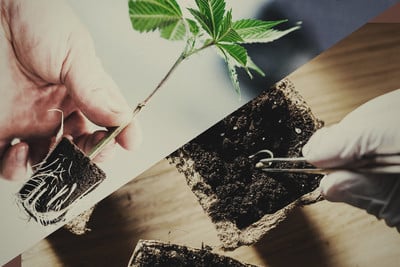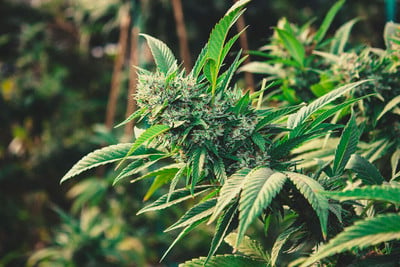Hemp History: All You Need To Know About The Legacy Of Hemp
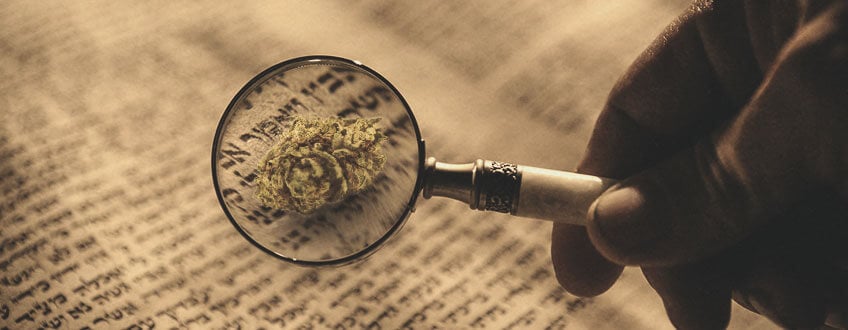
Hemp has attracted a lot of attention over the last few years, mainly because of the rising popularity of CBD supplements. But hemp is really nothing new. In fact, it is believed to be one of the earliest plants cultivated by humankind.
Interestingly, however, the history of hemp as one of our most important cultivars often gets left out of history books and classrooms. In this article, we’ll explore the rich history of hemp and its transition from a plant used mainly for food and fibre to a huge trend in health and medicine.
Contents:
CHINA: WHERE HEMP FIRST LAID ITS ROOTS
The earliest mentions of hemp as a cultivar come from ancient China. Xia Xiao Zheng, for example, is an ancient Chinese text and one of the oldest agricultural treatises in the world. It lists hemp as one of the main crops in ancient China. Archeological evidence from sites all around the country also shows that the Chinese heavily relied on cannabis as a crop.
Historians believe that the Chinese first grew hemp as a food crop, thanks to its highly nutritious seeds. As their agricultural processes improved, the Chinese learned that they could use hemp stalks to make fibre for paper, rope, clothing, and more. The first hemp-derived ropes and paper are believed to have emerged in China around 2,800 BCE. Hemp cultivation is believed to have started much earlier, as far back as 8,000 BCE.
The origins of these first hemp cultivations have now been traced back to early farming communities based around the Wei and Yellow rivers in Eastern China. The weaving of hemp fibre is believed to date back more than 10,000 years, approximately the same time humans discovered pottery.
According to the US Hemp Museum, hemp became so important to ancient Chinese society that China called itself “the land of hemp and mulberry”, the latter of which was used for the production of silk. Great ancient Chinese texts like The Book of Songs and The Annals both list hemp as one of the six main crops planted by the Chinese.
The Chinese referred to hemp as “ma” (麻). Translations of this vary, with some sources suggesting it means “plant with two parts”, alluding to the fact that cannabis plants can be male or female. In medical texts, cannabis and hemp are sometimes referred to as “da ma” (大麻), which some sources either translate as “great hemp” or “great numbness” depending on the context.
The Chinese also used cannabis and hemp as medicines. The practices of ancient Chinese medicine are attributed to Emperor Shennong, a mythical emperor who is said to have introduced the Chinese people to herbal medicines. The best-known work credited to Shennong is the Shennong Bencaojing, an ancient book containing over 360 entries of plants and their medicinal properties.
Emperor Shennong’s work is believed to have laid down the foundation for the Pen Ts’ao—the world’s oldest pharmacopeia—which recommends cannabis for rheumatic pain, intestinal constipation, malaria, and more.
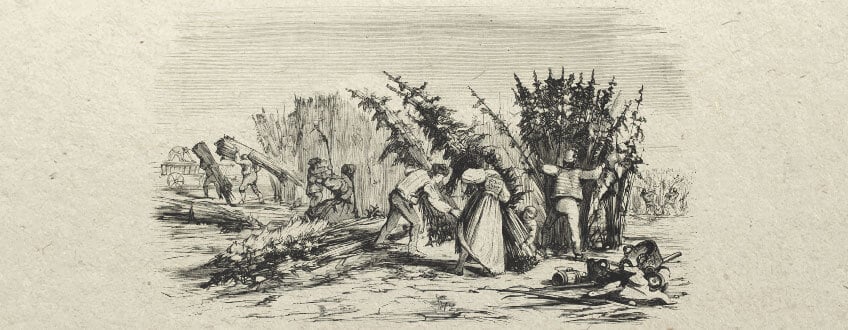
HEMP IN INDIA
Hemp is believed to have been brought from China to the Indian subcontinent around 2,000 BCE. Cannabis already grew naturally in the foothills of regions like modern-day Pakistan, Nepal, Kazakhstan, and India. However, cannabis here had different uses.
Cannabis played a central role in religion and spirituality in India and surrounding regions. It was mentioned in various ancient texts including the Atharva Veda, which describes cannabis as one of five essential plants. According to Dr. Uma Dhanabalan from Harvard University, the Vedic texts claimed cannabis could be used to improve memory, fight leprosy, and much more. Cannabis was also believed to be the favorite food of the Hindu god Shiva.
Other cannabis-derived substances such as bhang (a milk drink made with cannabis), charas (a type of hand-rolled hashish), and ganja (cannabis flower) also played key roles in the religious and spiritual cultures of these regions, and they still do so today.
Cannabis also has a rich history as a medicine in India. The Sushruta Samhita, an ancient Sanskrit medical text, mentions bhanga (believed to be cannabis) as a medicinal plant that can help treat phlegm, diarrhoea, and inflammation. Other Indian texts reference cannabis as a painkiller, aphrodisiac, and more. However, the agricultural and industrial uses of hemp were believed to be brought to India by the Chinese via the trade of hemp fibres, textiles, and more.
Hemp farmers in India planted cannabis and used water-retting (a process of soaking hemp stems in water) to help break apart hemp fibres and prepare them for processing. This practice is still used today in some parts of the world where hemp is farmed for its fibre.
HEMP: FROM BASIC CROP TO POWERFUL COMMODITY
From 800 to 200 BCE, hemp and hemp-derived products were at the center of a healthy trade market across Asia that reached as far as Northern Africa and the Eastern Mediterranean. By 200 BCE, cannabis and hemp had made their way to ancient Greece and even the Roman Empire. By the year 500 AD, hemp had spread all across mainland Europe and Asia, where it was being used for rope, textiles, medicines, and much more.
HEMP IN THE EARLY MODERN ERA
Hemp played a major role in the discovery and colonisation of the New World, namely as material used for ropes, sails, and rigs on the ships that first brought men and women to places like the Americas, Australia, and more. Hemp also played a big part in building the empires that ruled during these times.
In 1553, for example, English King Henry VIII mandated English farmers to plant hemp for the growth of the empire, fining them for failure to comply. By 1616, hemp was growing in Jamestown, the first permanent English settlement in the Americas. Here, hemp was being used as fuel for lamps, to make clothing, as well as for ropes and rigging for ships. By 1619, the Virginia Assembly mandated farmers in the colonies to grow hemp, a mandate that is today believed to be the first cannabis law in the New World.
Throughout the rest of the 17th, 18th, and 19th centuries, hemp continued to sustain a crucial role in the US. From being used to make Old Glories to being the backdrop for early documents, hemp has long been at the heart of US development. By the 1850s, the US census recognized roughly 8,400 hemp plantations around the country.
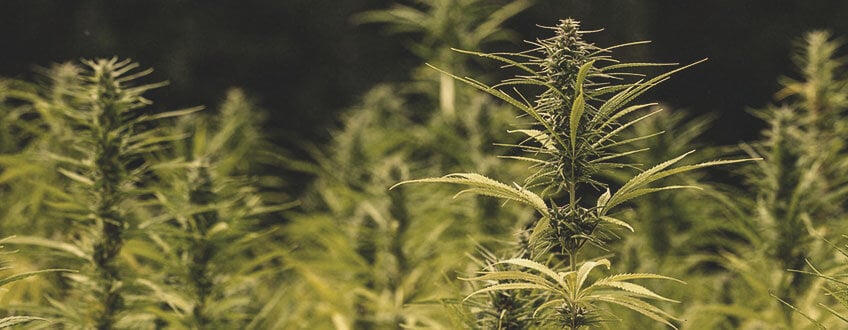
But the Americans weren’t alone in growing hemp during the modern era. Around this time, European nations like France, Spain, and Switzerland were also growing hemp, and recognized its potential as an industrial tool, medicine, and more.
HEMP IN THE 20TH & 21ST CENTURIES
The 20th century was an interesting time for hemp as a lot of countries around the world began to restrict or criminalise cannabis and other drugs. At the same time, some countries (such as the US) resurged their national hemp industries to meet the demands of war. However, the international war on drugs built up a strong stigma around cannabis that also extended to hemp, and eventually brought some countries’ hemp industries to a standstill. The US hemp industry—which once flourished—produced its last harvest in 1957 in Wisconsin.
Some other countries followed suit. Germany, for example, banned hemp from 1982 to 1996. The UK banned hemp much earlier, from 1928 to 1993. Meanwhile, some other countries managed to keep their hemp industries alive, including Switzerland, Romania, and France, the latter two being some of the biggest producers of hemp in Europe.
THE TODAY AND TOMORROW OF HEMP
Today, hemp has once again jumped into the spotlight. After years of prohibition in many countries around the world, people are beginning to reconnect with cannabis and understand that it is much more than just a psychotropic drug.
One reason the hemp industry is booming is due to the rising star of CBD. The industry for cannabidiol is expected to be worth $16 billion by 2025 in the US alone. And countries are finally moving to meet the demands of this boom.
The 2018 US Farm Bill, for example, removed hemp from the US federal list of scheduled drugs. Thanks to the huge potential of CBD as a health and wellness product, countries like the US, Canada, and many more are finally moving to rekindle the age-old hemp industry.


























